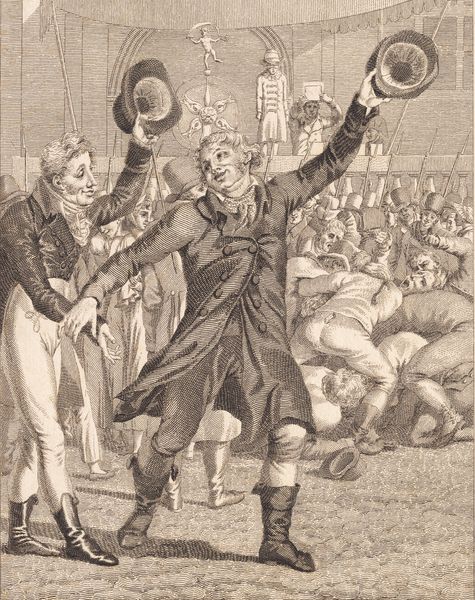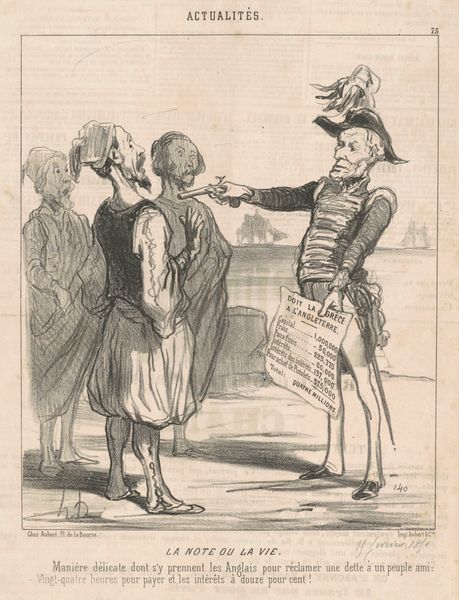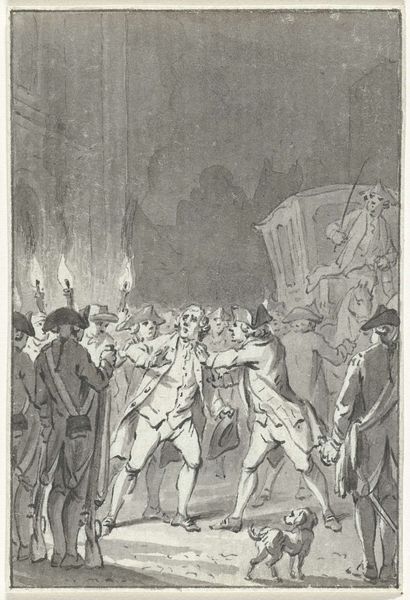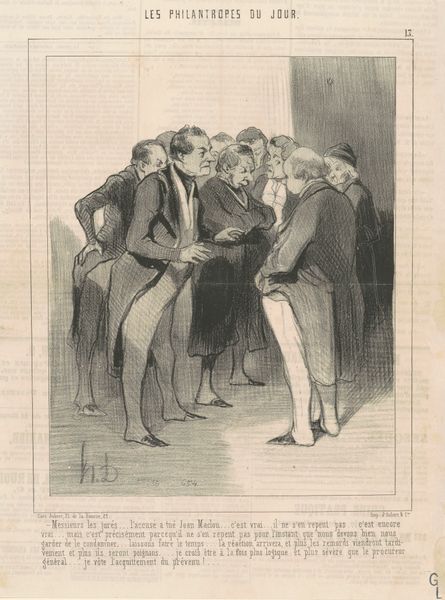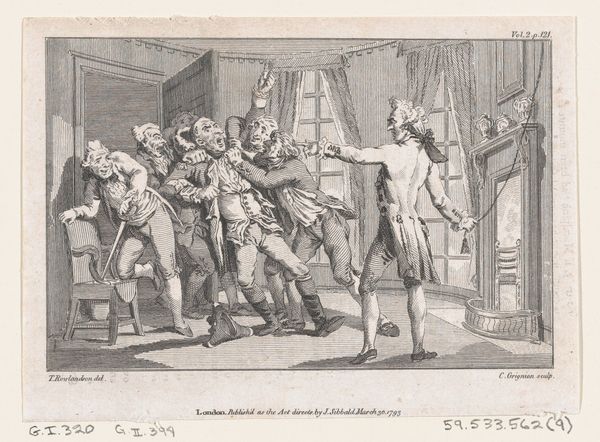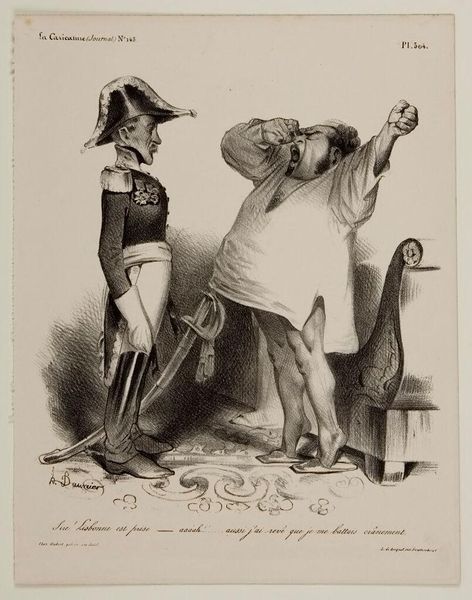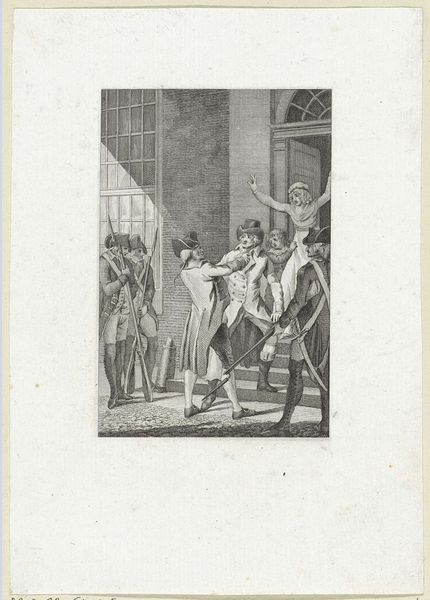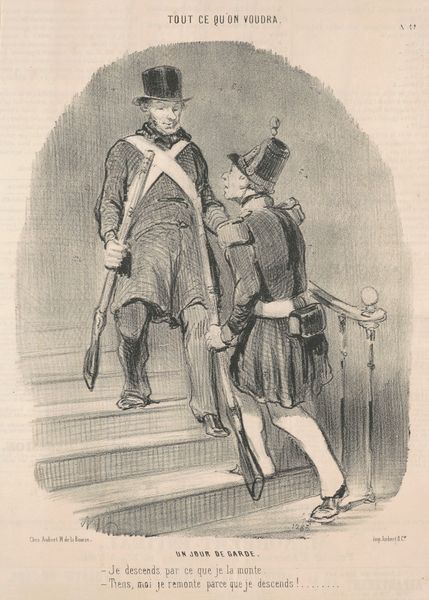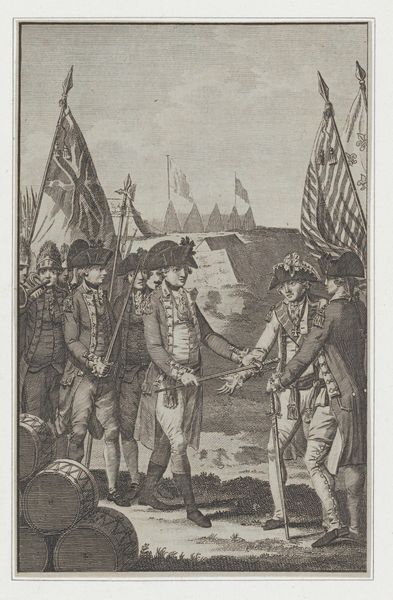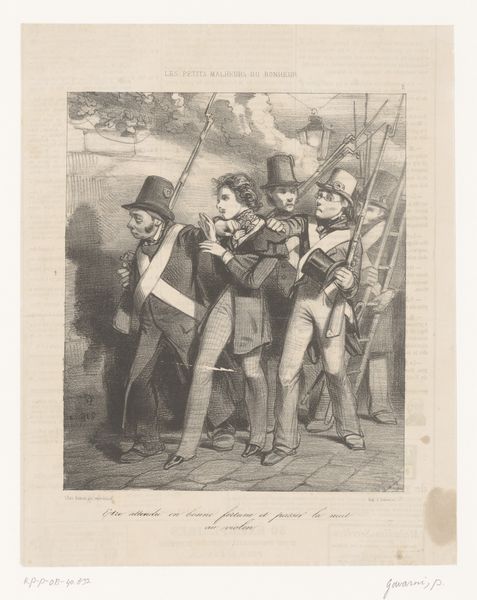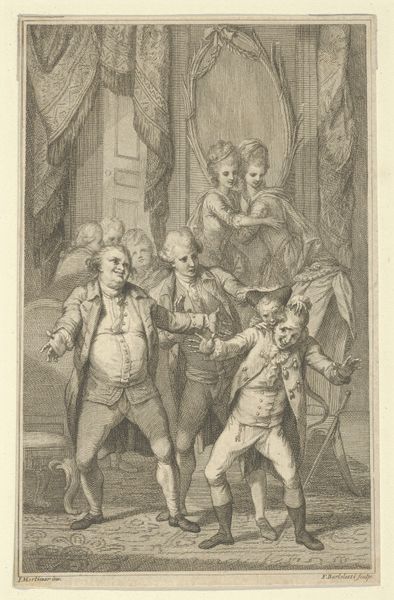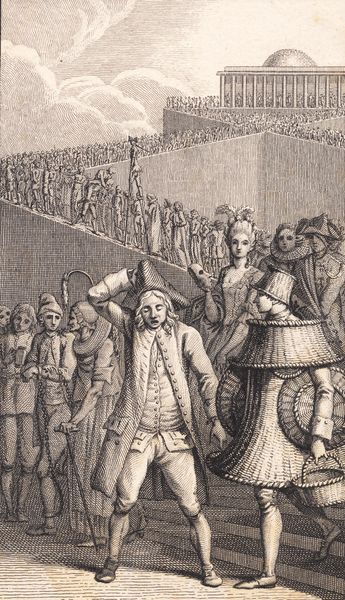
print, etching, engraving
#
portrait
#
narrative-art
# print
#
etching
#
romanticism
#
history-painting
#
engraving
#
realism
Dimensions: 307 mm (height) x 213 mm (width) (bladmaal)
Curator: This print, "Opulency," was created by J.F. Clemens between 1815 and 1816. It’s currently held at the SMK, the National Gallery of Denmark. What are your initial thoughts on this narrative scene? Editor: I’m immediately struck by the density of the engraving. Look at how many lines make up the image and describe the forms. It speaks to me of meticulous labor. It feels…oppressive. Curator: Yes, that aligns with the etching and engraving processes used here, allowing for great detail and sharp contrasts. It evokes Romanticism while hinting at social realism. It captures a specific moment, the consequences, if you will, of sudden fortune. Notice how the text at the bottom highlights the false friends drawn by “opulency” or “fortune.” Editor: Absolutely. The material reality here—the etching, the paper, the ink, and its production process – all speaks to its availability for widespread distribution and social critique. This isn't an oil painting meant for an aristocratic drawing room; this is commentary for the masses. Curator: Precisely. Think of the narrative, then, unfolding within a very specific political and economic climate. This work invites reflection on who benefits from wealth and the potential for that wealth to corrupt relationships, distorting authentic connection along lines of power. Editor: I'm also drawn to the use of the printing press here. Its labor-intensive creation underscores how the engraving served to reproduce this satirical image for wider viewership and consumption within the bourgeois public. A labor that brings to question issues such as craft and how the use of these relate to societal hierarchy. Curator: Considering that it depicts what looks to be drunken celebration, that accessibility means that Clemens’ satire and criticism becomes, indeed, quite potent. His message becomes part of social discourse, and speaks to our society to this day. Editor: So while "opulency" might signify luxury, what the means of production give us access to is its very undoing. Curator: In essence, yes. Clemens compels us to reconsider the relationship between wealth, authenticity, and social structures. Editor: Well, it has definitely offered a lens for scrutinizing the intricate material networks of production inherent in both artistic creation and class commentary.
Comments
No comments
Be the first to comment and join the conversation on the ultimate creative platform.
